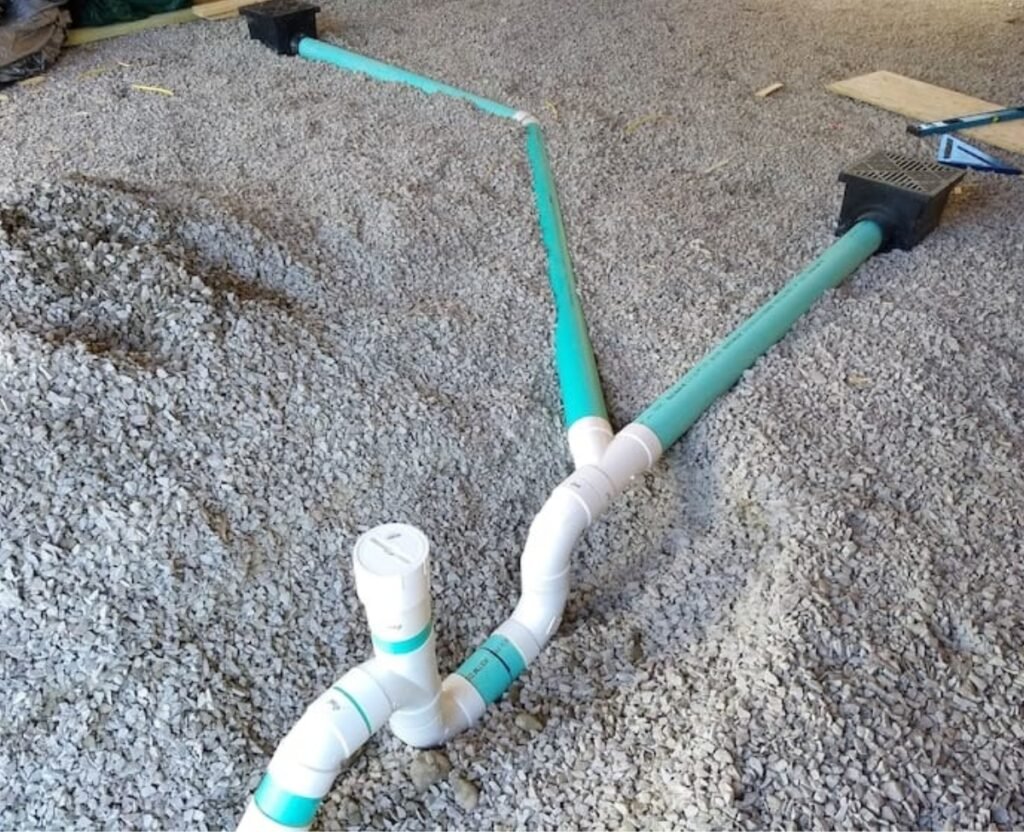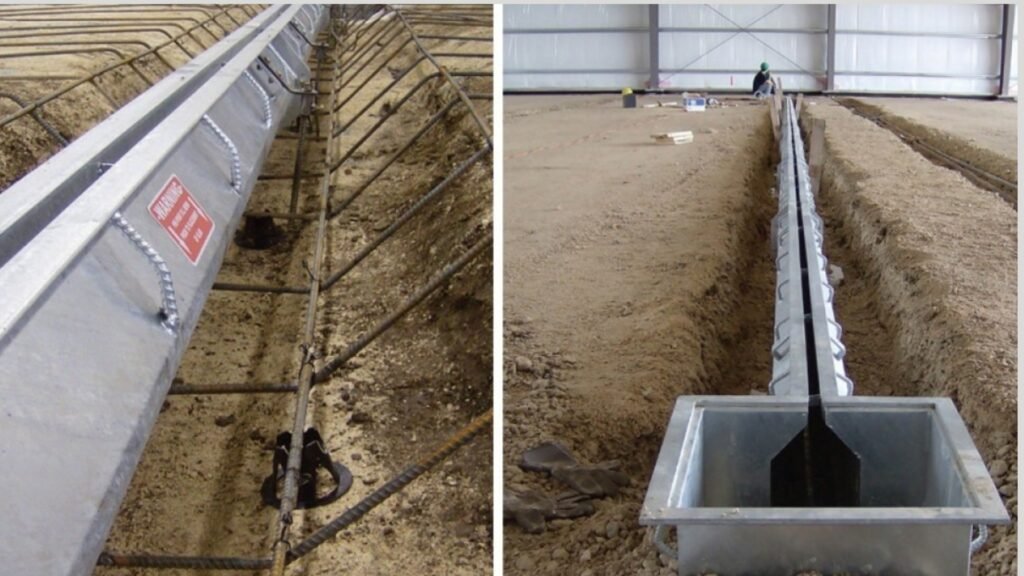Garage floor drains are essential installations that prevent water buildup and protect garage spaces from damage. These systems are designed to handle water from snowmelt, rainfall, or spills, directing it safely out of the garage. By keeping the floor dry and clean, drains improve functionality and preserve the structural integrity of the area. Homeowners rely on these simple yet effective solutions to maintain a safe and pleasant environment in their garages.
Experts have extensively explored garage floor drains, emphasizing their critical role in water management and safety. Research highlights how these systems reduce hazards caused by standing water while guarding against long-term damage to structures. Studies also discuss the various designs available, which cater to different layouts and drainage needs, such as trench or round drains. Overall, professionals advocate for proper installation and regular maintenance to maximize efficiency and durability.
Proper drainage in a garage offers more than just practicality; it transforms the space into a clean, versatile, and comfortable area. Whether used for parking, storage, or hobbies, a reliable drain system enhances usability without requiring constant upkeep. Imagine an effortless solution that prevents waterlogged floors, odor, and even accidents. These benefits showcase why garage floor drains are a valuable upgrade that often goes unnoticed until you experience the difference they make. This guide will walk you through the types of garage floor drains, their installation process, maintenance tips, and the benefits they bring to homeowners.
Types of Garage Floor Drains
When selecting a garage floor drain, understanding the different types available can help you make an informed decision. Each design serves distinct purposes, accommodating various garage layouts and specific needs.
Trench Drains
This type excels in garages where large amounts of water need quick removal. The grated design prevents debris buildup while allowing water to pass freely. Trench drains span across spaces, often near entrances, making them ideal for wet climates or areas prone to flooding.
Round Drains
Round drains are compact and efficient for smaller garages. These drains feature a circular design and are easy to fit into garages with minimal space. Typically placed strategically in the center of the garage, they collect water that flows toward them from sloped floors. Round drains suit residential garages and areas needing basic drainage.
Catch Basin Drains
A catch basin drain incorporates a small basin below the surface that captures debris and sediment. It prevents clogging in connected pipes, making it a suitable choice for garages prone to collecting dirt. This type requires regular cleaning but provides excellent long-term benefits by protecting drainpipes from blockages.
Sloped Drains
Sloped drains are a structural option rather than a separate drain type. This approach works well in garages handling snow or rain runoff, but may require extra planning during construction.
Combination Systems
For larger garages or commercial setups, combination systems employ multiple drains to handle high water volumes. A mix of trench and round drains ensures optimal drainage in varied conditions. These systems feature interconnected pipes, directing water effectively away from the structure.

Installation of Garage Floor Drains
Begin by choosing the right drain type, then follow a structured approach for installation.
Step 1: Plan and Prepare
Identify a low point in the floor or decide where to slope it. Confirm necessary permits with local authorities and review building codes. Make sure to check for underground utility lines before starting excavation.
Step 2: Excavate and Set the Drain
Use a concrete saw to cut a trench in your garage floor if installing a trench drain. For round or catch basin drains, carve out the specific areas needed. Ensure trenches or holes slope downward slightly toward the main drain line for effective water flow. Install the drain body securely, ensuring stability before proceeding.
Step 3: Connect to the Drainage System
Attach the installed drain to the garage’s drainage system. This could involve connecting to municipal sewer lines, dry wells, or open systems leading away from the building. Use PVC pipes with secure fittings to prevent leaks. If necessary, incorporate P-traps to block sewer odors.
Step 4: Test the Drainage System
Before sealing the floor, test the system. Pour water near the drain and watch it flow. Make adjustments to the slope or fittings if necessary. The water should pass through the drain smoothly, without pooling or backflow.
Step 5: Seal and Reinforce
Cover the trenches, holes, or exposed areas with self-leveling concrete to restore the garage floor. For extra durability, consider adding a protective coating like polyurea for a seamless finish. This not only improves drainage but also enhances the overall appearance of the floor.
Maintaining Garage Floor Drains
A well-maintained garage floor drain prolongs its functionality and prevents issues like clogging, bad odors, or flooding. Regular inspections and upkeep are essential.
Clear Debris from Grates
Inspect drain grates weekly to remove any visible debris. Grates catch leaves, dirt, or larger particles, which can block the drain if neglected. Use a metal scraper to loosen stubborn buildup.
Clean the Strainer
Strainers act as secondary filters in most drains. Remove the grate, then check the strainer underneath for trapped debris. The process ensures free water flow and reduces sediment accumulation.
Flush the Drain
Periodically flush the drain with water to prevent sediment buildup in pipes. For stubborn dirt, employ a plumbing snake or auger to remove blockages deep within the pipes.
Inspect the P-Trap
Ensure the trap remains filled with water by adding some regularly. If odors persist, consider flushing the trap with vinegar and warm water.
Seasonal Maintenance
If you live in a cold climate, winterize your drainage system. Insulate exposed pipes and apply antifreeze to avoid freezing. For trench drains, inspect connected pipes for ice buildup or cracks caused by fluctuating temperatures.
Professional Assistance
Schedule annual maintenance with a professional plumber, especially if your drain connects to municipal sewer lines. Experts can identify small issues before they escalate into costly repairs.
Benefits of Garage Floor Drains
Installing a garage floor drain offers numerous advantages for homeowners.
Water Management
Garage floor drains prevent standing water, which can damage floors or their protective coating. Efficient drainage keeps the area clean, dry, and safe for daily use. For families in snowy regions, this reduces messes caused by melting snow from vehicles.
Odor Mitigation
Stagnant water often leads to foul odors. A well-ventilated drainage system minimizes this problem by swiftly removing water and ensuring cleanliness.
Prevention of Structural Issues
Protect concrete surfaces from water seepage, cracking, or corrosion with a drain system. Proper drainage also directs water away from the garage foundation, reducing soil erosion or basement leaks.
Improved Safety
Slippery surfaces caused by water or oil spills lead to accidents. Garage floor drains reduce this risk by promptly removing hazards and maintaining safe conditions.
Convenience
Garage drains eliminate the tedious task of manually sweeping or mopping large puddles. For hobbyists or car enthusiasts, drains enhance convenience during projects involving water or cleaning agents.
Conclusion
Garage floor drains are not just a functional upgrade—they contribute to the longevity, cleanliness, and versatility of your garage space. An efficient drainage system transforms a garage from a cluttered, damp area into a well-maintained environment suited for multiple uses. Whether protecting investments in vehicles or creating a comfortable home workshop, drainage plays a role that often goes unnoticed.
Investing in a well-planned and professionally-installed drain pays dividends in maintenance savings and improved quality of life. When water issues arise, a high-performing drain system acts as an unsung hero, ensuring disruption-free routines. Sometimes, subtle features make the biggest impact.

